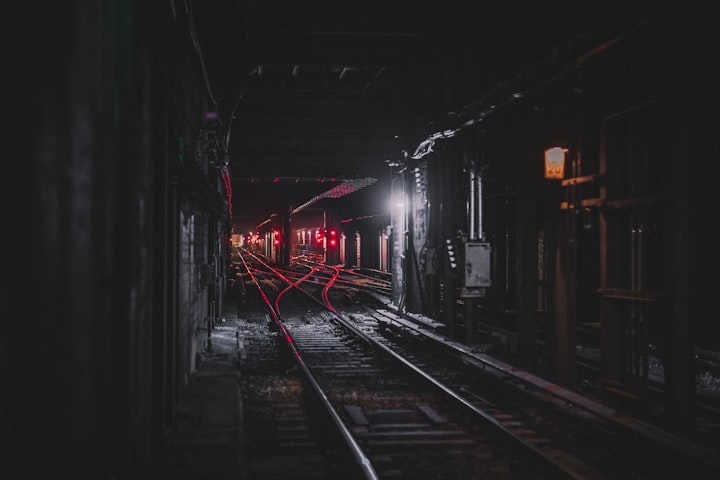Top 5 Fascinating Things Happening Underground
Underground Activities Analysis

- The formation of caves and underground caverns through erosion and other geological processes. Caves can be formed by water, ice, wind, and even volcanic activity. They offer unique environments for rare and endangered species and are also popular tourist destinations.
Yes, that's correct. Caves are unique underground environments that can be formed by a variety of geological processes. The most common process is erosion caused by water, which can dissolve the limestone or other soluble rocks and create caves over time. Some caves are formed by the freezing and thawing of ice in cracks in rock, a process known as frost wedging. Others can be formed by wind erosion, volcanic activity, or even ancient underground rivers. Caves offer a unique habitat for many species of animals and plants, some of which are found only in caves and are endangered. Caves are also popular tourist destinations because of their natural beauty and the opportunity to explore underground environments.
- The study of subterranean organisms and ecosystems. There are many organisms that live entirely underground, such as cave fish and cave insects, that have adapted to the dark, subterranean environment in unique ways.
- The use of underground space for construction projects such as building foundations and underground parking garages. Underground construction is becoming increasingly popular as cities become more densely populated and land becomes scarce. It is also an effective way to deal with issues such as flooding, and it can also help to preserve green spaces.
Yes, the study of subterranean organisms and ecosystems is a fascinating field of research. Subterranean organisms, also known as troglobites, have adapted to living entirely underground and have evolved unique characteristics to survive in the dark, subterranean environment. For example, some cave fish are blind or have reduced eyesight because there is no light underground, and some cave insects have lost pigmentation because there is no need for camouflage.
These organisms have also developed unique adaptations to survive in the subterranean environment. For example, cave fish have developed specialized sensory systems to navigate in the dark, and some cave insects have developed the ability to survive on very limited food resources. The subterranean ecosystem is also unique and fragile, and is often threatened by human activities such as pollution, habitat destruction, and the introduction of non-native species. The study of subterranean organisms and ecosystems is important for understanding the unique biodiversity of our planet and for protecting these unique and fragile habitats.
Yes, the use of underground space for construction projects is becoming increasingly popular as cities become more densely populated and land becomes scarce. Building foundations, underground parking garages, and other underground structures are a great way to make better use of limited space in urban areas. Building underground can also help to preserve green spaces and other important areas on the surface.
Underground construction can also be an effective way to deal with issues such as flooding. Underground structures are less likely to be damaged by floods and can also help to reduce the risk of flooding by storing water underground. Additionally, building underground can also help to reduce the urban heat island effect, which can make cities warmer than surrounding rural areas.
However, underground construction also has its challenges, such as high costs and complex engineering requirements. It requires extensive planning, specialized equipment and skilled labor, and there is also a need to consider the potential impact on the surrounding environment and the underground subsurface.
- The use of underground tunnels and subway systems for transportation.
Yes, the use of underground tunnels and subway systems for transportation is a common and important aspect of urban infrastructure. Underground subway systems are used to move large numbers of people quickly and efficiently in densely populated cities, reducing traffic congestion and air pollution. Subway systems also often connect different parts of a city, making it easier for people to get around and access different areas.
The construction of underground tunnels for transportation can be challenging and expensive, as it requires specialized equipment, skilled labor, and extensive planning. The underground environment also poses unique engineering challenges, such as dealing with water infiltration and maintaining air quality.
However, the benefits of underground transportation systems can be significant. They can reduce traffic congestion, improve air quality, and provide a more reliable and efficient mode of transportation for millions of people. Additionally, they also provide an alternative mode of transportation in case of emergencies, power outages or natural disasters
- The use of underground bunkers for emergency preparedness and military purposes.The use of underground bunkers for emergency preparedness and military purposes is a way to protect people and important assets from various threats. Emergency preparedness bunkers are typically used to protect civilians from natural disasters such as tornadoes, hurricanes, and earthquakes. They can also be used to protect against other types of emergencies, such as nuclear accidents or terrorist attacks.
Military bunkers, on the other hand, are used to protect troops and military assets from enemy attacks. These bunkers can be used for various purposes, such as command and control centers, communication hubs, storage facilities, and as shelters for troops and equipment. Underground bunkers can provide a high level of protection from various types of attacks, including conventional weapons, and nuclear, biological, and chemical weapons.
However, building underground bunkers can be very expensive and complex, requiring specialized equipment and skilled labor. They also require extensive planning, as well as the consideration of environmental and safety concerns. Additionally, the use of underground bunkers for military purposes can also raise ethical concerns, as they can be used to protect military assets and troops at the expense of the civilian population in the surrounding areas.






Comments
There are no comments for this story
Be the first to respond and start the conversation.